Indianz.Com > News > Cronkite News: Navajo Nation continues fight against COVID-19 pandemic
Hope and resilience in action: Navajo Nation continues battle against COVID
Tuesday, December 14, 2021
Cronkite News
TUBA CITY — It’s a familiar sight to anyone who knows the Navajo Nation: red sandstone, yellow-tinged sagebrush, a blue sky canopy that meets a protective ring of mountain peaks, with sheep and cattle dotting the fields.
A newer addition to the timeless landscape is a series of hand-lettered turquoise signs along southbound U.S. 89 near Tuba City. “Native people are resilient, resourceful, kind, and most of all hopeful,” one says.
The messaging reflects how far the Navajo Nation has come in battling and recovering from COVID-19, and how it remains vigilant against a disease that has has taken the lives of 1,557 people on the Navajo Nation.
In mid-2020, the Navajo Nation had the highest per-capita infection rate of COVID-19 in the U.S. Although the infection rate remains high, tribal leaders continue to practice mitigation efforts while many parts of the U.S. have relaxed restrictions.
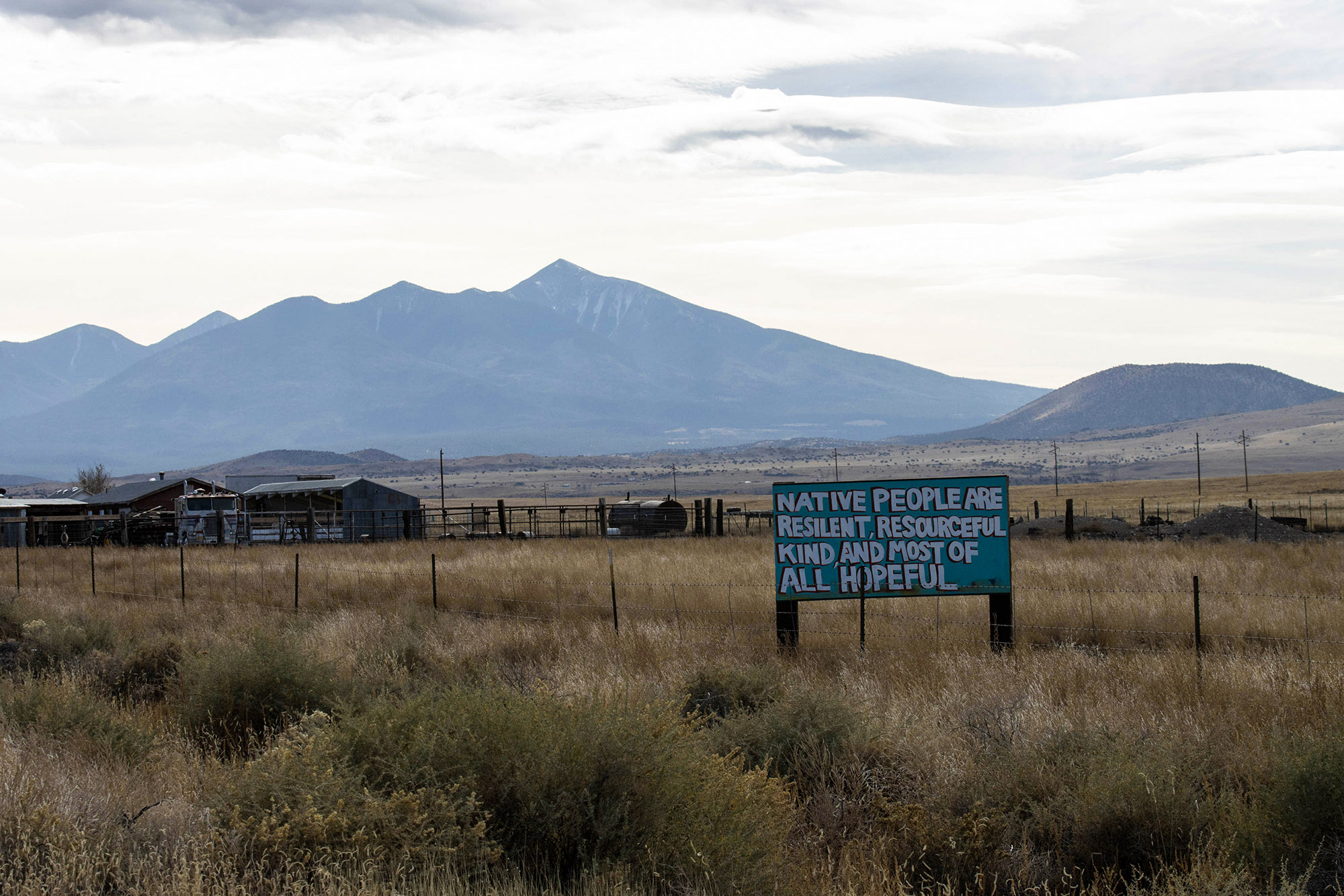
Reflecting on the pandemic
Residents of Tuba City, nearly 80 miles north of Flagstaff and one of the largest towns on the Navajo Nation, reflected on the past 21 months of dealing with the pandemic and experiencing loss and hardship while gaining a greater understanding of what “community” means.
“It was a big scare at that time,” Valentina Nez of Tonalea said as she waited in her car to receive a booster shot at the Tuba City Regional Health Care mobile medical unit. “You don’t know who has COVID, and you want to protect yourself, so you think about your family as well as your co-workers.”
Nez, who has received two doses of the Moderna vaccine, was afraid of coming into contact with people who may have been infected, some of whom seemed to have little concern for their safety.
“It was definitely heartbreaking, knowing that there were a lot of people losing their lives to this virus, something we don’t know anything about,” she said, describing the effects it had to her social life and noting that she had removed herself from social media because it was damaging her mental health.
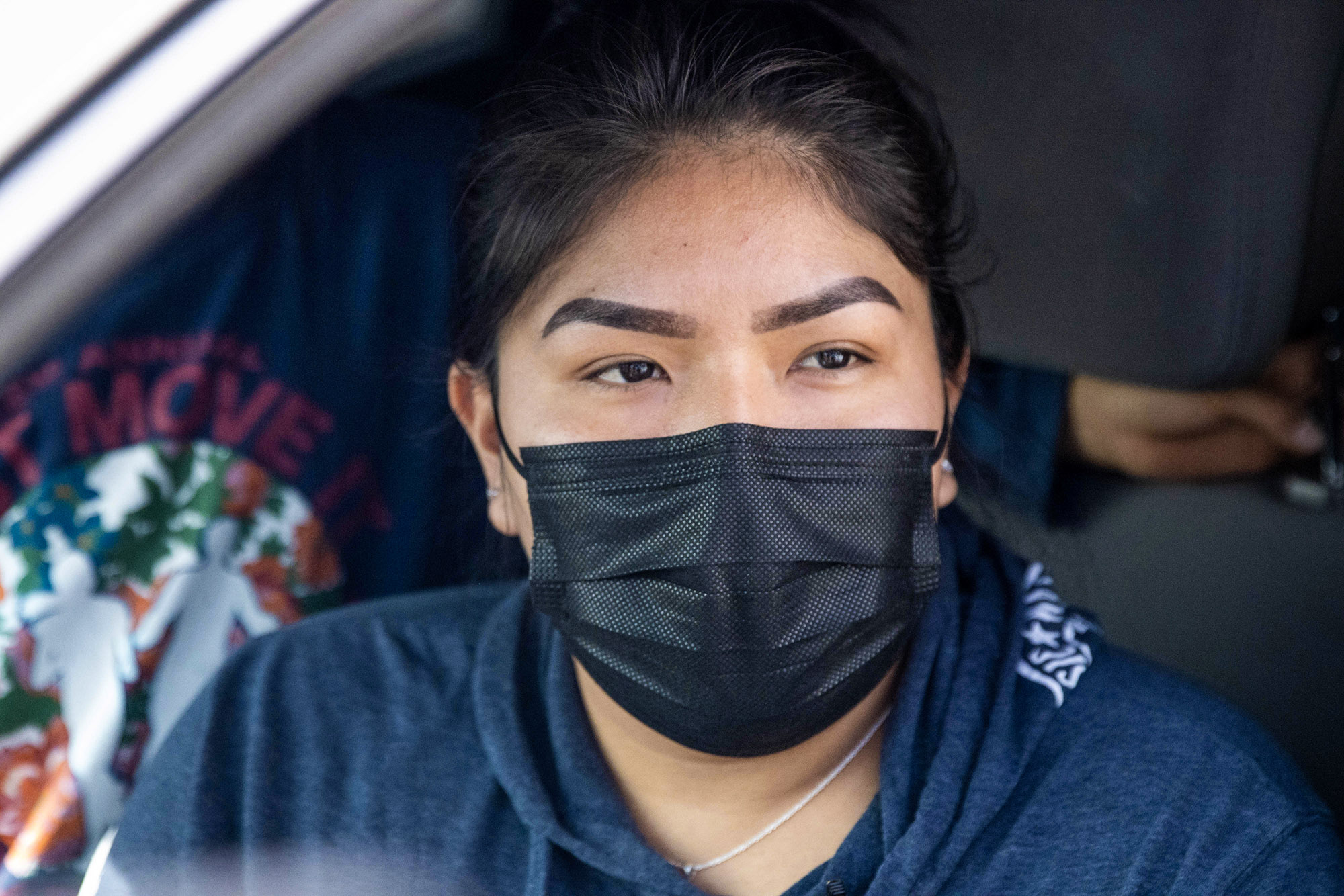
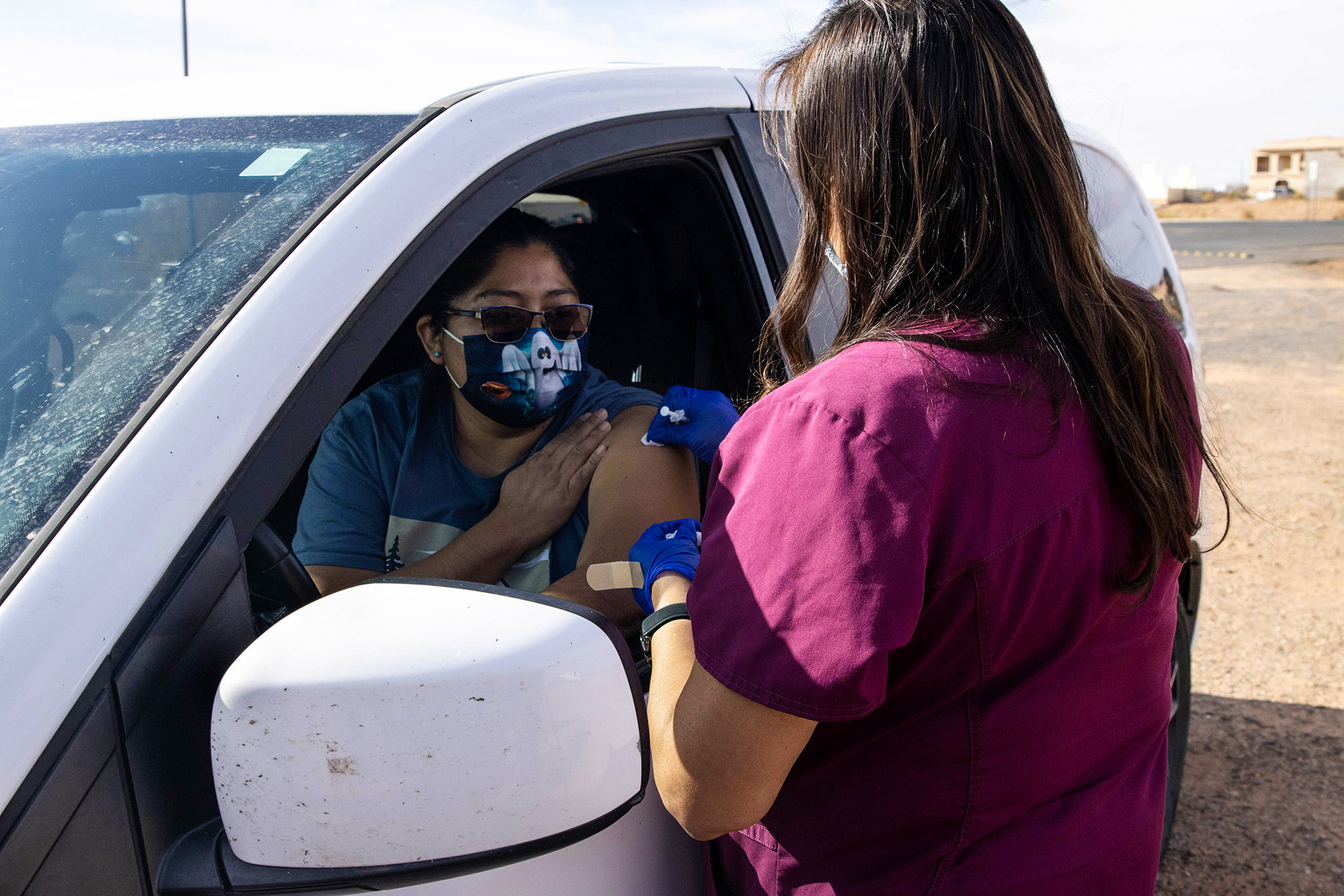


Sovereignty in treatment
Tuba City Regional Health Care’s RV-size mobile medical clinic is parked on a small, vacant lot on the border of the Navajo Nation and the Hopi Tribe it surrounds. It provides COVID-19 vaccines, Pfizer and Moderna boosters to adults and now shots for children as young as 5.
The clinic, which began operations in mid-2013 and services the communities around Tuba City, primarily provides such medical services as physicals, non-COVID-19 vaccines, some lab testing and pharmacy medications, and even physical exams for commercial drivers license candidates. Since regular health care operations at the hospital resumed in July, the clinic on average sees about 20 patients a day.
Tséhootsooí Medical Center in Fort Defiance also has a mobile medical unit that provides similar services to communities that lack transportation.
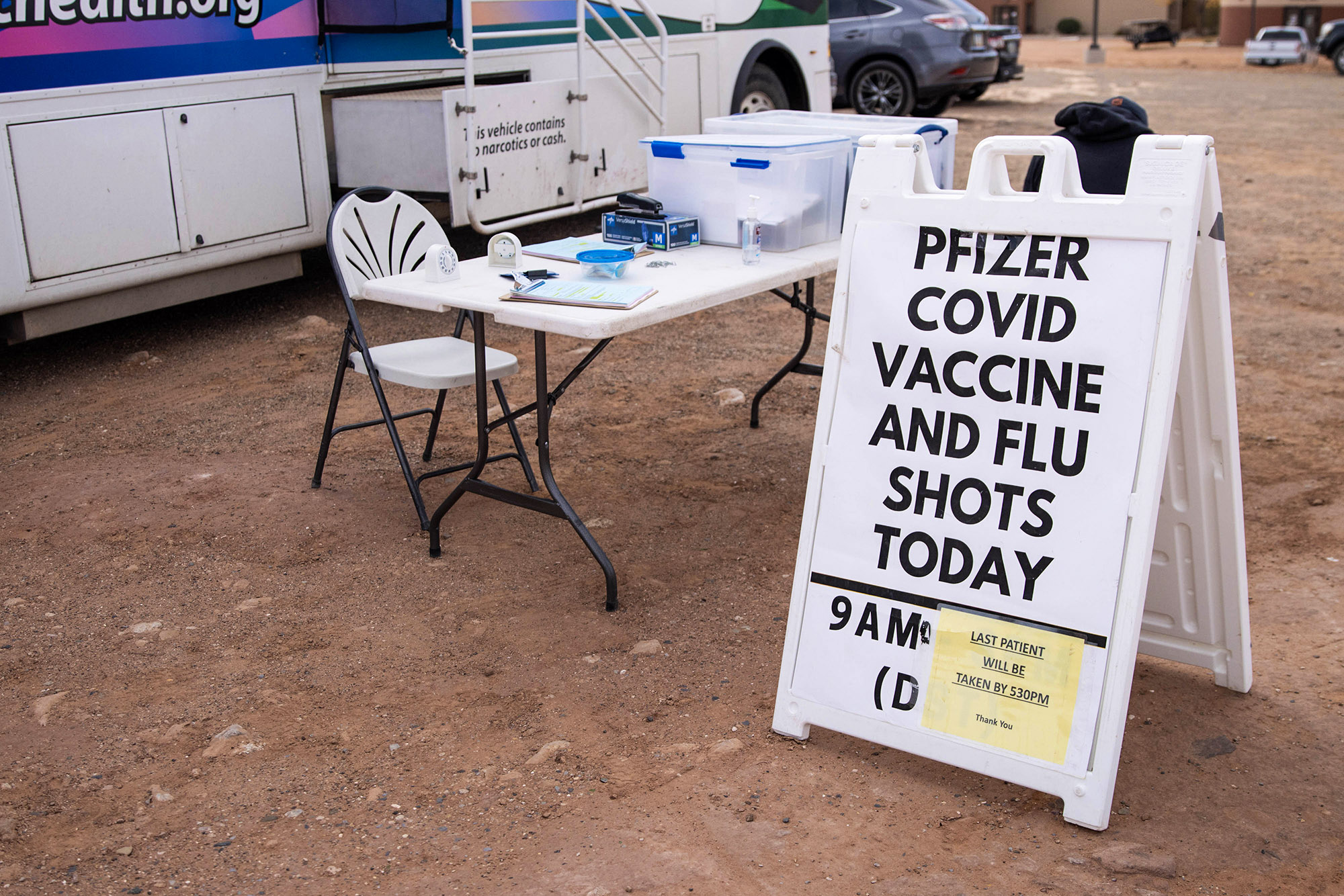
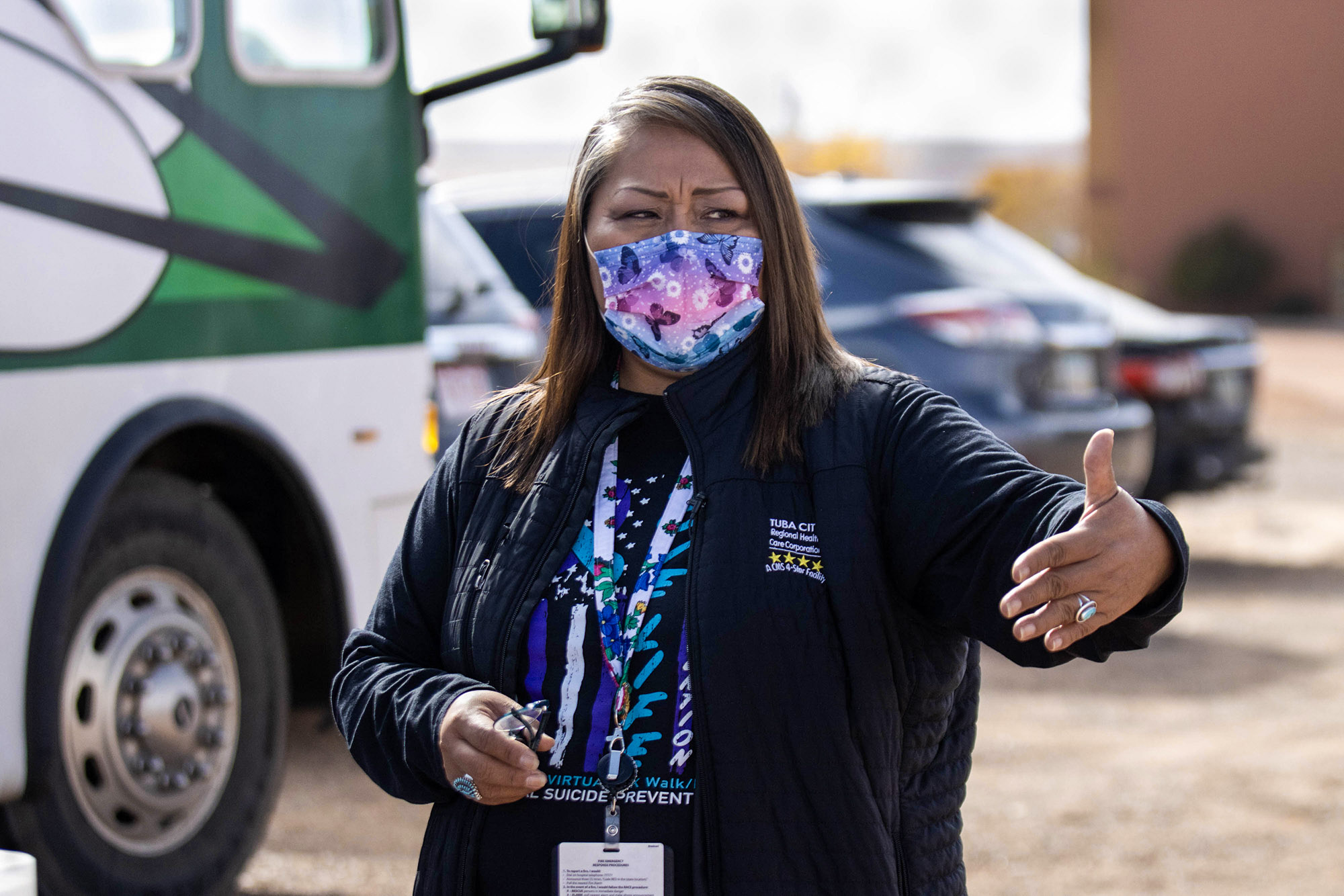
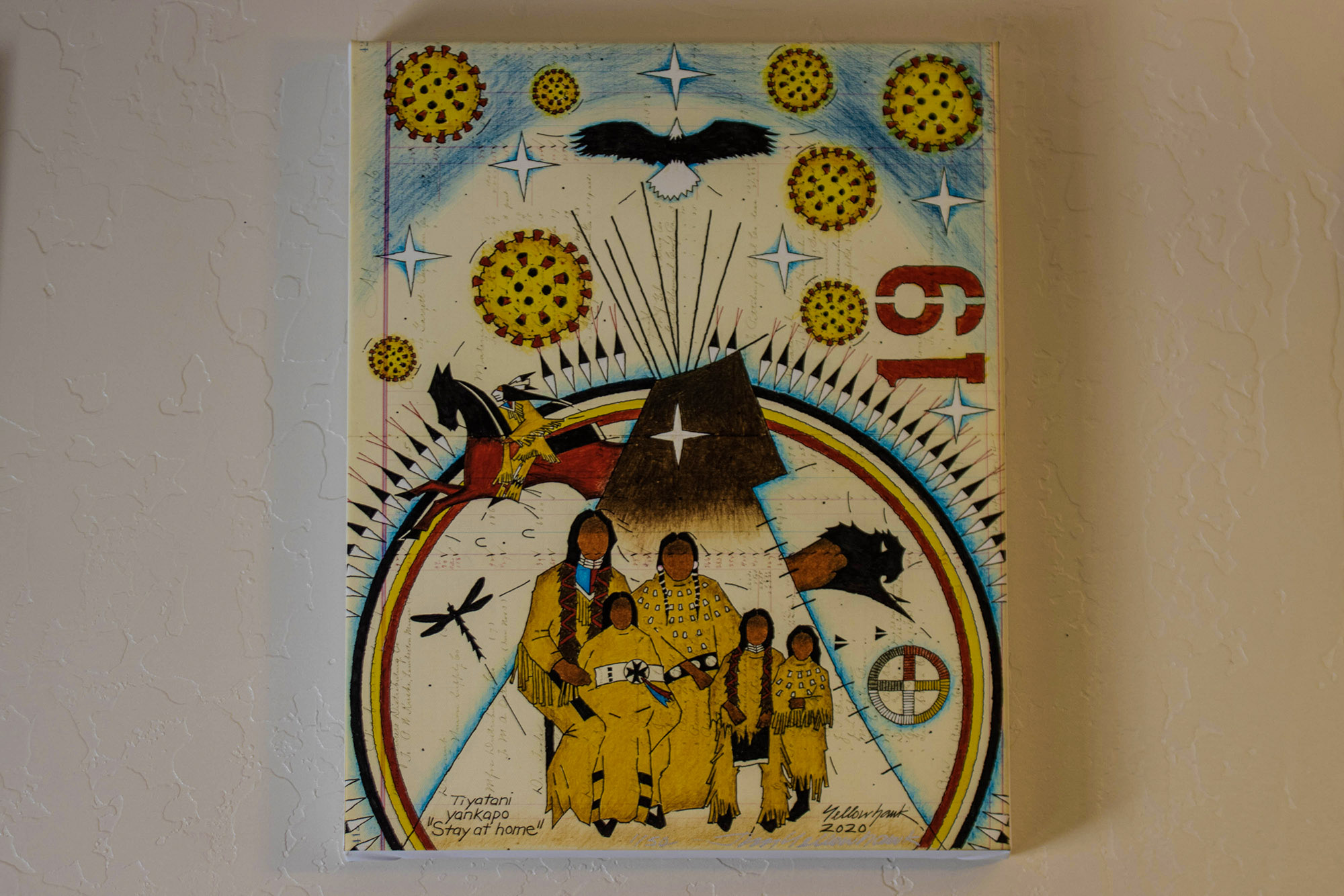
Weathered but hopeful
Nez, Jackson and Baca still display the optimism that got them through the past year and a half – despite the challenges and losses that nearly every Navajo experienced.
Baca’s involvement with supply distribution and other community outreach efforts changed his perception of those who were infected. Once he saw their faces and heard their voices, his concern for them outweighed his fear of exposure to the coronavirus that causes COVID-19.
“It was easy to transition into being more empathetic toward them,” Baca said. “We gave them a little bit of company – especially the elders, they missed that. The ones who were sick, too, I could see why they felt alienated and whatnot.”
Nez encouraged others to get vaccinated and get informed if they’re unsure.
“If there’s a way we can make an impact with getting our vaccine, and that it’s free, then why not?” Nez said. “We have so many elders and young children. It’s a good thing. We’re going to learn more about it, and the studies and statistics are going to show whether it’s making an impact or not, and, if it’s not, I’m sure they’re going to fix it.”
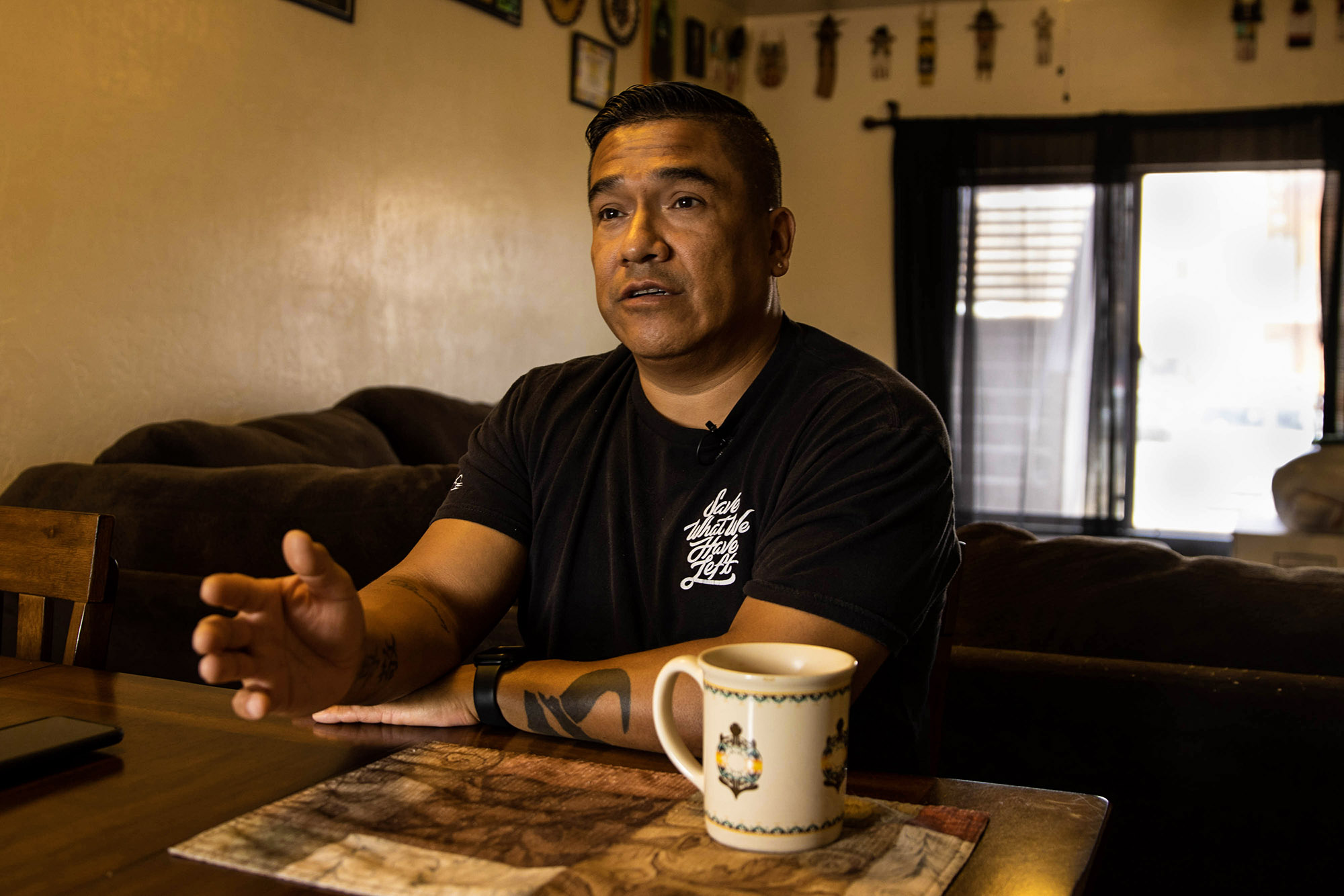
Note: This story originally appeared on Cronkite News. It is published via a Creative Commons license. Cronkite News is produced by the Walter Cronkite School of Journalism and Mass Communication at Arizona State University.
Search
Filed Under
Tags
More Headlines
Cronkite News: Gathering addresses ‘epidemic’ among Native people
VIDEO: Cody Desautel on tribes and federal forest management
AUDIO: Legislative Hearing on Discussion Draft of Forest Management Bill
Native America Calling: Remembering the 1974 Navajo border town murders
Native America Calling: Can the right approach close the Native immunization gap?
Cronkite News: Long COVID cases remain high in Arizona
Native America Calling: Eyes in the sky for development, public safety, and recreation
Native America Calling: Three new films offer diverse views of Native life
NAFOA: 5 Things You Need to Know this Week
Chuck Hoskin: Cherokee Nation works toward cure for arthritis
Native America Calling: Protecting young people from the down sides of social media
Cronkite News: Fake ‘shaman’ among candidates failing to make Congressional ballot
Native America Calling: New Native voices in poetry
Cronkite News: Tribes air concerns about border at hearing in nation’s capital
Native America Calling: Indiginerds descend on Oklahoma City
More Headlines
VIDEO: Cody Desautel on tribes and federal forest management
AUDIO: Legislative Hearing on Discussion Draft of Forest Management Bill
Native America Calling: Remembering the 1974 Navajo border town murders
Native America Calling: Can the right approach close the Native immunization gap?
Cronkite News: Long COVID cases remain high in Arizona
Native America Calling: Eyes in the sky for development, public safety, and recreation
Native America Calling: Three new films offer diverse views of Native life
NAFOA: 5 Things You Need to Know this Week
Chuck Hoskin: Cherokee Nation works toward cure for arthritis
Native America Calling: Protecting young people from the down sides of social media
Cronkite News: Fake ‘shaman’ among candidates failing to make Congressional ballot
Native America Calling: New Native voices in poetry
Cronkite News: Tribes air concerns about border at hearing in nation’s capital
Native America Calling: Indiginerds descend on Oklahoma City
More Headlines